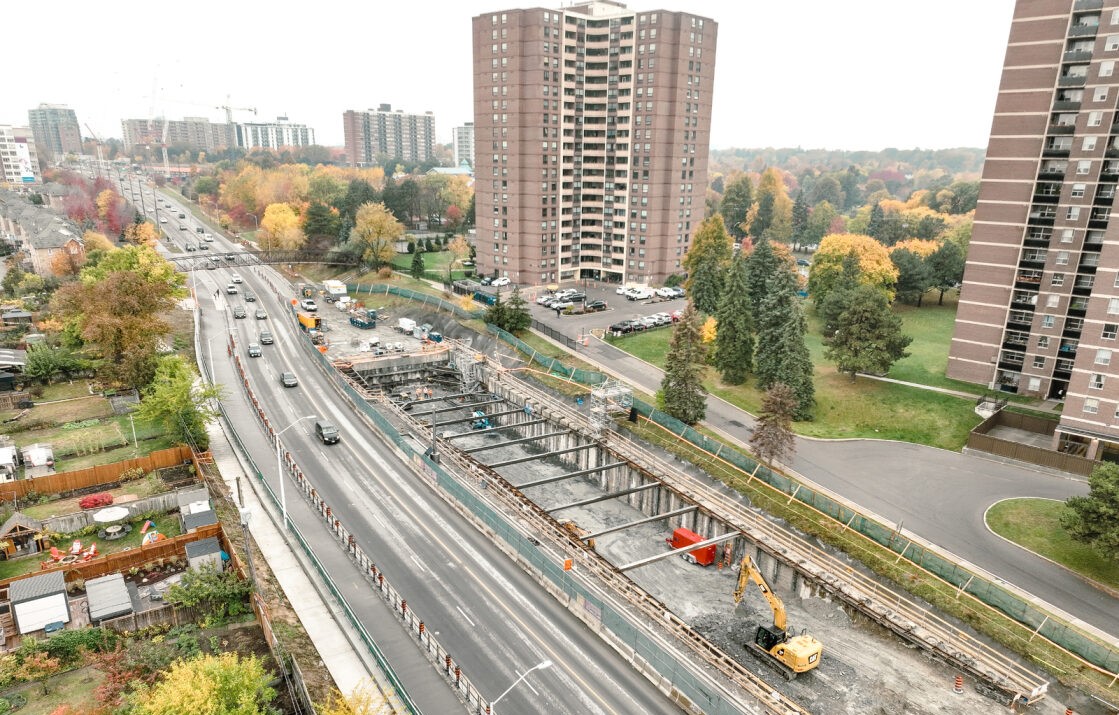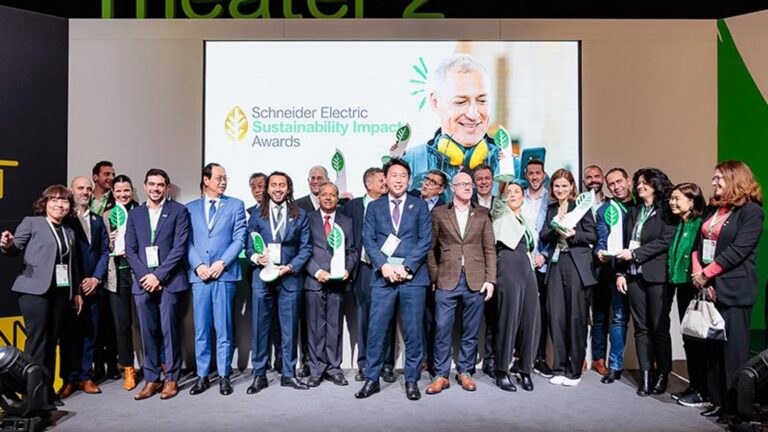Sunday, July 6, 2025
The climate emergency calls for more responsible building and infrastructure practices. Leading firms in the sector are starting to address this need through innovative strategies to guide these projects towards greater sustainability.
With this in mind, WSP recently presented an informative webinar to introduce Envision®, a framework is helping to transform Canadian projects fostering sustainability, the economy and social well-being. The expert panelists explained the significance for the industry, the impact on Canadian projects, and tips for adopting this framework into future projects.
Kirsten MacKenzie, a member of the WSP Climate Change, Resilience, Sustainability and Energy Group, kicked things off with an overview of the framework.
“Envision is a holistic sustainability framework and rating system that enables a thorough examination of the sustainability and resiliency of all types of civil infrastructure,” said MacKenzie, who is a third-party Envision Verifier with the Institute of Sustainable Infrastructure (ISI). This designation qualifies her to assess the sustainability performance of a variety of infrastructure projects against the Envision Rating System through to final project Verification.
“It is the only comprehensive tool in North America that can assist government agencies and their consultants and contractors in delivering infrastructure that tackles climate change, addresses public health needs, cultivates environmental justice, creates jobs, and spurs economic recovery.”
Envision was developed by the ISI in collaboration with the Zofnass Program for Sustainable Infrastructure at Harvard University’s Graduate School of Design. The American Public Works Association (APWA), the American Society of Civil Engineers (ASCE), and the American Council of Engineering Companies (ACEC) founded ISI and remain integral supporters.
Envision supports better project planning, design and delivery by:
- Promoting environmental justice and social equity principles within project processes and decision making.
- Supporting communities to achieve carbon neutrality.
- Facilitating improved stakeholder engagement and interagency collaboration.
- Increasing the resiliency, preparedness, and long-term viability of civil infrastructure.
- Addressing a broad range of social, economic, and environmental indicators.
- Providing climate-ready infrastructure.
- Delivering fiscally responsible and resource-efficient infrastructure.
The Envision guidance manual includes 64 sustainability and resiliency criteria in five categories: Quality of Life, Leadership, Resource Allocation, Natural World, and Climate & Resilience.
Meeting higher levels of achievement for credits in certain categories can be a bit challenging for some of the larger, more complex projects, says MacKenzie. However, “early collaboration and an intentional approach can support in meeting some of the more aspirational targets.”
Envision has been successfully applied to more than 100 infrastructure projects, collectively worth more than US$106 billion in infrastructure development.
There are various verification pathways; Pathway A includes design and post-construction, whereas Pathway B includes one final submission package post-construction.
“It’s important to note that the ISI recognizes the complexity of infrastructure projects and the nuances associated with different delivery models,” emphasized MacKenzie. “So, there are some other options for verification to account for the uniqueness of some of these different projects.”
Maeri Machado, director of Climate Change, Resilience & Sustainability for WSP in Canada has worked on more than 10 Envision projects so far. Her related experience includes 70 sustainability building projects and multiple projects involving embodied carbon and lifecycle assessments.
Machado said that several of WSP’s clients are electing to exploring the Envision option. “The need for climate action continues to be recognized at a global scale as urgent, and many of our clients, including government and authorities, are increasingly prioritizing this and integrating meaningful sustainability into their projects. But deciding to do it and actually implementing it are two very different things.”
Several public agencies have already applied the Envision framework. More than 200 cities, towns, counties, public agencies, and academic institutions across the US, Canada, and globally recognize or use Envision to guide infrastructure development. These Envision-supported project teams are delivering better roads, public transportation projects, airports, renewable energy facilities, water/wastewater projects, and other types of civil Infrastructure.
Additionally, more than 250 private-sector companies and industry associations embrace Envision solutions and collaborate with ISI and their clients to implement Envision. WSP, HDR, Stantec, AECOM, Tetra Tech, and many others are Envision qualified companies. WSP, for example, has over 25 Envision Sustainability Professionals across Canada
“Third-party verification is an attractive benefit of Envision,” explained Machado. “It provides credibility to sustainability and ESG reporting. It also allows for comparison between different projects, and can also be helpful with controversial projects within the public realm.”
How does the Envision framework compare with some other competitive rating systems on the market?
“Envision is one of the only rating systems that recognizes the importance of sustainability and that embraces social sustainability in a holistic way,” said Machado, citing local hiring, qualify of life and leadership credits, and credits for enhanced social equity and justice.
Another key driver is overlapping with ESG and alignment with federal, provincial, and regional mandates, such as:
- Net-zero emissions by 2050, 40 per cent by 2035
- For applicable projects, reduce the embodied carbon of the structural materials of major construction projects by 30 per cent, starting in 2025.
- Conduct climate risk assessment to improve the understanding of the risks on federal assets.
- Protecting 25 per cent of Canada’s land and waters by 2025 and 30 per cent by 2030.
- Integrating sustainability planning with local communities.
Envision case studies in Canada
As of March 31, 2024, 36 projects have been completed in Canada, mostly in the transportation sector but also in energy, water, waste, landscape and information. The panelists highlighted a couple of case studies for consideration.
Advanced Tunnel 2 Project for the Eglinton Crosstown West Extension in Toronto, Ont.
Part of the greater Eglinton Crosstown West Extension initiative, this project was in alignment with Authority ESG goals and targets. Envision requirements outlined in ATC2 Project Agreement to support the fill ECWE program meeting future Envision verification, with a Well structure approach to strategically deliver sustainability across the full ECWE greater project. This project demonstrated a balanced approach to infrastructure development and commitment to environmental stewardship. Image credit: Aecon
Centerm Expansion and South Shore Access Projectin Vancouver, B.C.

This project achieved a Platinum-level award. The project team brought together stakeholders and decision-makers early and often. The collaborative Envision strategy developed to align with Authority ESG goals and targets, and a comprehensive procurement approach, to result in the world’s most sustainable port. “We are very pleased to have achieved such remarkable, independent recognition for our sustainability efforts during planning, design and construction of this critical project for Canada. It was made possible thanks to a concerted team effort and leadership toward our vision,” stated Gilles Assier of the Vancouver Port Authority. Credit: VFPA.
What’s the typical range of cost associated with these projects? The panelists provided an estimate of $17,000 to $70,000 plus costs associated with procurement models and whether multiple submissions are needed with multiple contractors. However, they added that it really depends on the unique features of the project.
“We also see some benefits to costs in using Envision because it’s a collaborative and integrated process that inspires early involvement and collaboration,” points out Machado. “And that can help drive costs down for any project.”
To view the complete webinar, click here.
For further information on the Envision framework, contact kirsten.mackenzie@wsp.com
or maeri.machado@wsp.com
Featured image credit: Vancouver Port Authority.













